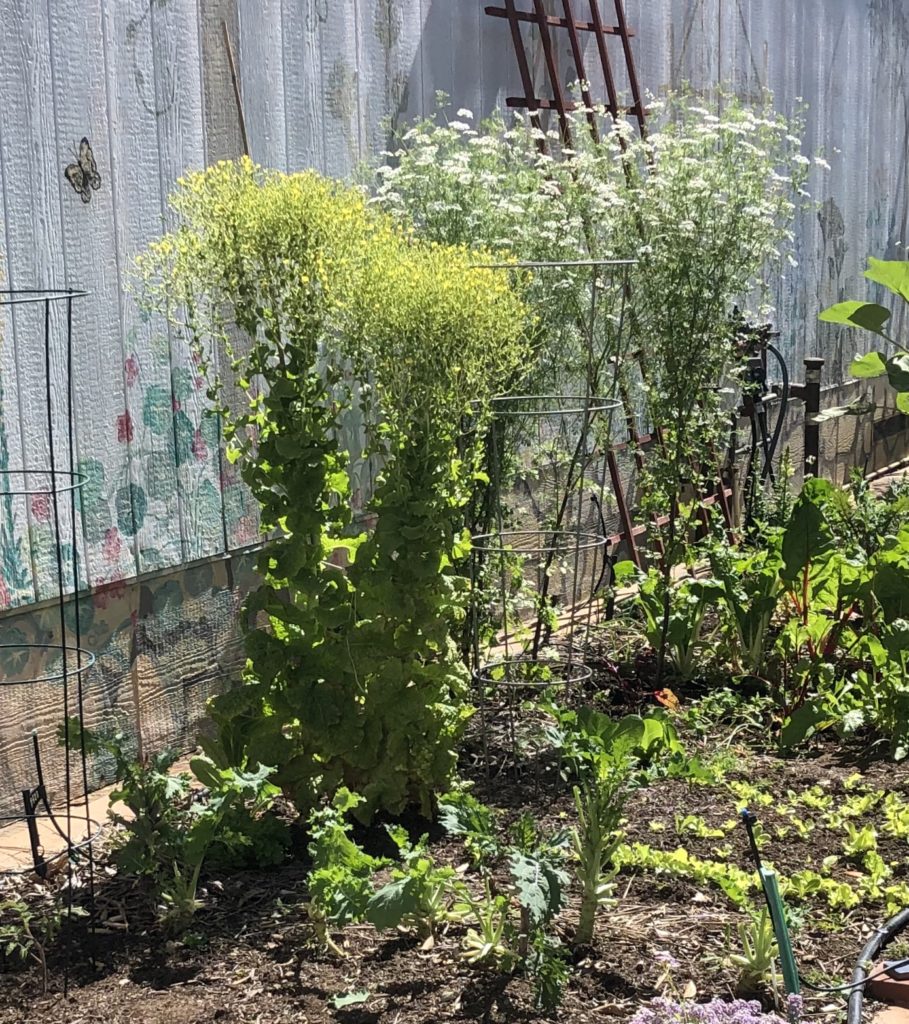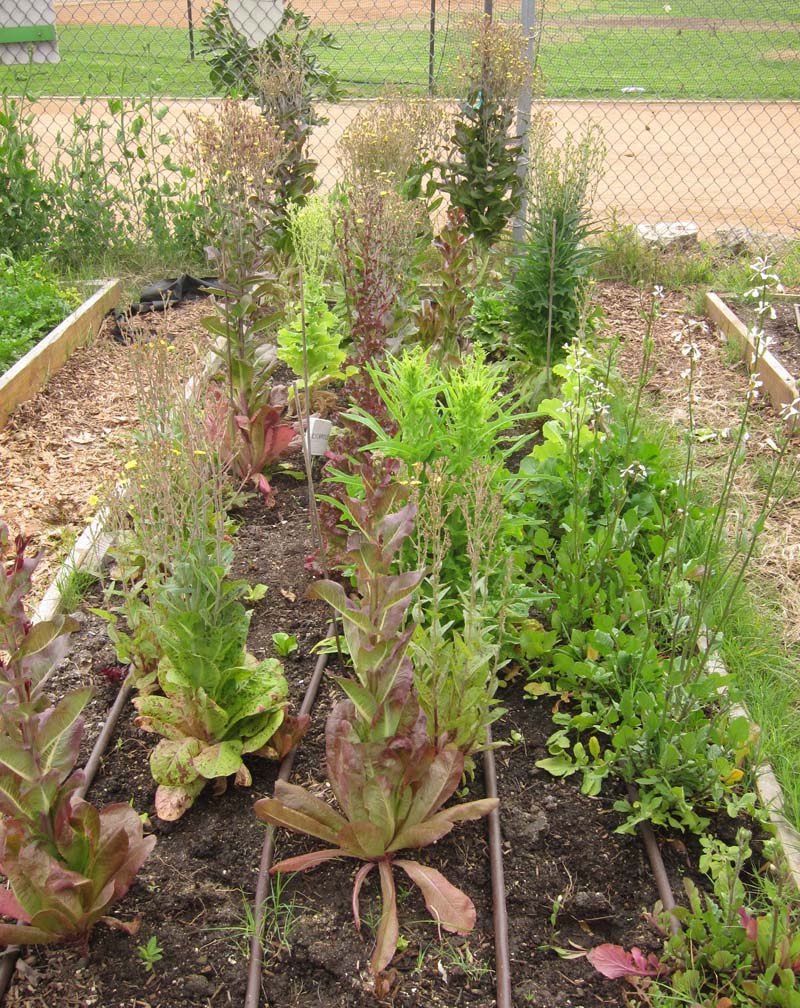Lettuce was first planted in late fall. Flowering occurred around May 6. The white flowers in the rear are cilantro. June 17 – The flowers have all died back and turned into fluffy white clouds enveloping the seeds. They look like their close relative the dandelion. At this point, the seeds are fully mature and […]
Tag Archives: lettuce
Lettuce has been around for centuries. According to Wikipedia, the Egyptians first cultivated lettuce as edible leaves as early as 2680BC. It then made its way to Greece and Italy where it flourished. Today, we see four main varieties of the species, Lactuca sativa, in our backyard or school garden. These include: ~ Crisphead or Iceberg, […]
It is late winter and many of the crops from our September planting are either finished (cauliflower, broccoli, peas, beets, and carrots) or bolting (cilantro, lettuce, arugula). Now is the time to pick out which plants we want to save for seed. Choose plants that are healthy, vigorous and with characteristics worth saving. The red […]
My summer lettuce patch is partially shaded by large squash leaves. This keeps the lettuce from bolting during the long, hot summer. I originally broadcast my seeds rather than sowing in rows to maximize the amount of produce grown in such a small space. Using this approach it is necessary to periodically thin out the […]
The vegetables we grow are mostly annuals. They start from seed, flower, and end as seeds all within a defined year. That’s their life cycle. Save some seeds this year. The easiest are cilantro and lettuce. We also do arugula, fennel, marigolds, beans and sunflowers. See Starting from Seed for more instructional material.
Bolting is the term used when a vegetable crop runs to seed. It is triggered either by a cold spell, a hot spell, or changes in day-length (photoperiod). Annual crops will bolt in the first year, biennials in the second year. Some vegetables (lettuce, mizuna, arugula, etc.) become unusable (bitter) once they bolt. A tell-tale […]
Our lettuce and mixed greens are loving this weather; not too hot, not too cold. The students have been harvesting the outer leaves of all our different varieties, as well as thinning out those grown too close together to add to the mix. We have such an abundance its time to discuss salad dressings. How […]
- 1
- 2


